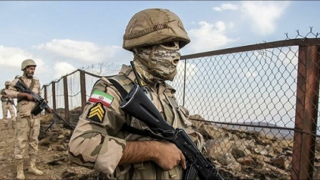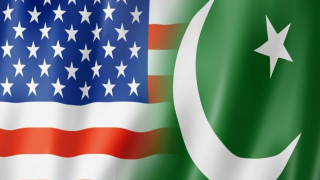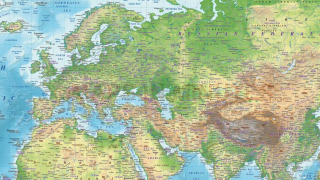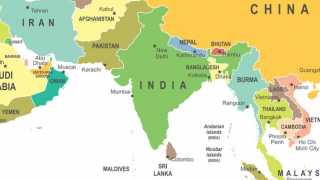Afghan Refugees in the COVID-19 Crisis
On April 6, 2020, Pak-Afghan border was opened for four days, from land crossings at Torkham and Chaman amid fear of the spread of coronavirus. This border was closed given the coronavirus crisis a couple of weeks ago. The abrupt decision of border closure in March 2020, prevented Afghan visitors from returning home. However, over the opening of the border, some analysts and media have started to call it a security risk because it would cause the spread of corona cases. It is thought that keeping the border closed is in the best interest of both Pakistan and Afghanistan as corona cases are rising day-by-day in these states. However, Foreign Office of Pakistan said that government decided to allow Afghan nationals living in Pakistan to leave for their country on the special request of the government of Afghanistan and the decision was purely based on humanitarian considerations.
It is pertinent to note that Afghans are presently the second-largest refugee group after Syrian refugees and almost 95% of Afghan refugees are living either in Iran or in Pakistan. According to UN High Commissioner for Refugees’ (UNHCR), Pakistan still hosts more than 1.4 million registered and some are living without proper documentation. Although UNHCR is also facilitating refugees for voluntary repatriation, a large number of refugees are still living in different provinces of Pakistan. The highest number of refugees more than 70% are settled in Khyber Pakhtunkhwa, Punjab hosts almost 10 %, similarly a significant number is residing in Balochistan and Sindh too. They are largely Afghanistan's Pashtuns; however Uzbeks, Tajiks, Baloch, Hazaras, and Turkmen are also included in refugees’ cohort. Afghans nationals in Pakistan are mostly daily wagers while few are self-employed or salaried workers and they are attached with trucking business and carpet trade. The primary concern of Afghan refugees in Pakistan is income generation and safe shelter.
Against this background, it would not be difficult to understand why the government has decided to open border for Afghani people. Pakistan has been hosting Afghan refugees since 1979. Suffice to say that Islamabad has always helped Kabul in difficult times and call it fraternal bilateral relations. Even last month amid a pandemic of COVID 19, Prime Minister Imran Khan showed his commitment to support Afghan brothers while opening Chaman-Spin Boldak border-amid pandemic- for trade in which export trucks carrying fresh fruits and vegetables had been allowed to enter Afghanistan. In this way, Pakistan has proved its solidarity with the people of Afghanistan, particularly at this time of the global pandemic.
Both states assured full preparedness and facilities before opening the border such as scanning and checking. Both governments had also set up quarantine camps at Torkham to screen suspected COVID-19 patients. Relevant authorities were in the mood to allow 1,000 people a day However, people overwhelmed by numbers and more than the expected people are reported to have crossed at the Chaman. The huge number of crossing put analysts into suspicion and this is bringing authorities under pressures. As per news sources, officials were struggling to control this exceptional movement but the wave of mass strikes convulsed the crossing points in the first three days. However, the inflow of returnees significantly reduced on the final day of the border opening.
Undoubtedly, this influx of migrants has raised fears of higher transmission rates as Afghanistan is a war-torn state and cannot manage corona cases. But according to the World Health Organization (WHO) Brief: COVID-19 No. 31, 9 April 2020, "More people have now acquired the virus inside Afghanistan than have brought it from other affected countries." It also maintained that "cases are expected to increase rapidly over the weeks ahead as community transmission escalates, creating grave implications for Afghanistan's economy and people's well-being". But the concerns have not gone away yet, the soaring fears are that border crossing individuals perhaps carrying new infections with them to the conflict-ridden and impoverished country. However, in this whole situation, one must think if the situation in Afghanistan is appalling why Afghani nationals were worried to go back? Why was the government of Afghanistan demanding the opening of the border?
Unequivocally, lockdown in Pakistan restricted employment and economic stress was taking place just like any other states. In this situation, Afghani nationals working in Pakistan were not able to continue their income-related activities anymore during lockdown so they decided to return. Some of them were desperate to return to their homes and to live with their families in this pandemic. As far as the question of huge influx is concerned, early plans to quarantine all refugees have now been revised and returnees are being instructed to self-quarantine in their respective homes so that spread of coronavirus can be curtailed.
Despite all this turmoil, the Afghan Government made a new request on which Pakistan would further facilitate the movement of cargo trucks and containers into Afghanistan through the Torkham and Chaman border crossing points three days per week. The decision was taken because potential supply disruption of key food commodities is expected which will have negative economic impacts on Afghanistan. In this milieu, it can be assumed that the decision was not unilateral but Pakistan decided to open border amid pandemic because of the mounting demand of refugees and Afghanistan’s government.
We need to understand that this time is not to suspect but to find logical solutions for odd situations. It is known that in this pandemic displaced people and host countries all over the world are at serious risk and they are the most vulnerable. Instead of speculating, we need to take action smartly and kindly. Thus the immediate requirement is preparedness to cope up health challenges. In the present situation, the only useful strategy would be to raise awareness and sensitize people crossing borders. As everyone is fighting the COVID-19, let’s show our support for refugees on humanitarian grounds.














